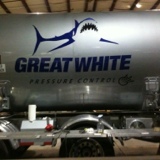Information
-
Date
-
LOCATION
-
WORK ORDER NUMBER
-
Prepared by:
-
INITIAL PERSONNEL - Select your team members
-
Initial names of Contractors (if any)
RISK ANALYSIS & TAKE 5
-
PICTURE OF SYSTEM / EQUIPMENT
-
PERSONAL PROTECTIVE EQUIPMENT REQUIRED - PPE
- Arc Flash PPE
- Safety Glasses
- Steel Toe Shoes
- Hearing Protection
- Harness / Fall Protection
- Face Shield
- Particle Respirator
- Cloth Gloves
- Chemical Gloves
- Tyvek Suit
- Goggles - Chemical
- Goggles - Welding
- Heat Resistant Clothing
- Hard Hat
- Others
-
LIST OF PERMITS & REQUIREMENTS
- Confined Space Permit
- Lockout / Tag Out Required
- Haz Com Review
- Hot Work Permit
- High Voltage Permit
- Other
- None or Not applicable
-
OTHER PERSONAL PROTECTIVE EQUIPMENT REQUIRED (if any)
-
WORK AREA PREPARATION
- Barricades / Signs Posted
- Ladders Secured
- First Aid / Emergency Contact
- Lockout Complete / Try Out Verified
- Permits Posted
- Eyewash / Shower
- Work area Defined
- Fire Extinguishers (Hot work)
- Others
THINK THROUGH THE TASK - Have a clear plan in mind
-
Do I understand what I am supposed to do?
-
Are there standard procedures for this job?
-
Do I have all of the required work permits?
-
Do I have all of the required Personal Protection Equipment?
-
Are my tools and equipment in good working condition?
LOOK FOR THE EXPOSURE - How and where the work is done
-
JOB SPECIFICS HAZARDS (WHICH ARE IDENTIFIED AND COMMUNICATED PRIOR TO WORK BEGINNING)
- Atmosphere / Confined Space
- Contact Burns / FIRE
- Compressed Gases
- Chemical exposure / Dust
- Engulfment / Ground Control
- Electrical /Mechanical
- Fall from Heights
- Slips / Trips on same level
- Mobile equipment / Forklift usage in area
- Pinch points
- Noise
- Others
-
Is there any additional hazard? (if any)
ASSES THE RISK - What could happen if things get out of control?
-
GREEN (LOW) - Continue with task, watch for exposure changes
-
YELLOW (MODERATE) - Continue with task; develop safe action plan
-
ORANGE (HIGH) - Stop, notify Supervisor: develop safe action plan together.
-
RED (CRITICAL) - Stop, notify Supervisor; complete risk assesment
TAKE PRECAUTIONS - Remove impediments to safety
-
Have the hazards been removed or controlled?
-
Have potential problems been discussed?
DO THE JOB SAFELY - Watch for changing conditions and exposure
-
Can we perform the job safely?
HOT WORK PERMIT
-
Do you require a Work Permit ?
All temporary operations involving open flames or producing heat and/or sparks require a Hot Work Permit. This includes, but is not limited to brazing, cutting, grinding, soldering, thawing, and welding.
Personel
-
Name of the person doing the "Hot Work"
- Edwin Horna
- Scotty Garret
- Patrick Parker
- Clayton Parrish
- Caleb Sawyer
- Shannon Brinson
- Brandon Carter
- Dustin Lord
- Brandon Hayes
- Blake Carter
- Will Oliver
- Chip Johnson
- Glen Ziegler
- Bill Brynteson
- Slayton Kitchens
- Brad Richards
- Chad Foskey
-
Additional Personnel doing Hot WORK
-
Name of the "Fire Watch"
- Edwin Horna
- Scotty Garret
- Patrick Parker
- Clayton Parrish
- Caleb Sawyer
- Shannon Brinson
- Brandon Carter
- Dustin Lord
- Brandon Hayes
- Blake Carter
- Will Oliver
- Chip Johnson
- Glen Ziegler
- Bill Brynteson
- Slayton Kitchens
- Brad Richards
- Chad Foskey
-
Additional Fire Watches
-
Fire Watch SIGN OFF: <br>Work Area and all adjacent areas to which sparks and heat could spread must be inspected during the fire watch period. <br>Fire Watch personnel must monitor work area for at least 30 minutes following "Hot work"<br>By acknowledging this section, I understand the requirements.
START TIME
-
START TIME
HOT WORK - CHECKLIST
-
Sprinklers and/or fire hoses in service / operable.
-
Hot work equipment in good condition (e.g power source, welding leads, torches, etc)
-
Multi-purpose fire extinguisher and/or water pump can.
REQUIREMENTS WITHIN 35 FT OF WORK
-
Dust, lint, debris, flammable liquids and oily deposits removed.
-
Explosive hazard in area eliminated.
-
Combustible floor (e.g. wood, tile, carpeting) are wet down, covered with damp sand, or fire blankets.
-
Flammable and combustible material were removed where possible. Otherwise, protected with fire blankets, guards, or metal shields.
-
All walls and floor openings covered.
-
Walkways protected beneath hot work.
-
Protect/cover or shutdown ducts and conveyors that might carry sparks to distant combustibles.
WORK ON WALLS OR CEILINGS
-
Combustible moved away.
WORK IN CONFINED SPACES
-
Confined space cleaned of all combustibles ( grease oil, flammable vapors)
-
Containers purged of flammable liquids / vapors.
-
Company confined space guidelines will be followed.
FIRE WATCH / HOT WORK AREA MONITORING
-
Fire Watch will be provided during and for 30 minutes after work, including any coffee or lunch breaks.
-
The Fire watch is supplied with an extinguisher, and/or water pump can. He is aware of other fire extinguishers located throughout the work area.
-
ENDING TIME FOR WORK PERMIT
-
Fire Alarm or extinguisher : The fire watch is trained in use of this equipment and familiar with location of sounding alarm
-
The fire watch is required for opposite side of walls, above, and below floors and ceilings.









